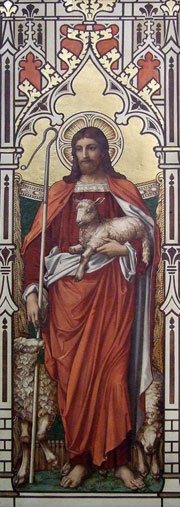
Take away the sovereign Pontiff and the Catholic Church would no longer be catholic. Moreover, without the supreme, effective, and authoritative pastoral office of Peter the unity of Christ’s Church would collapse. It would be vain to look for other principles of unity in place of the true one established by Christ Himself. As St. Jerome rightly observed: “There would be as many schisms in the Church as there are priests” (emphasis mine).
We would add that this cardinal principle of holy Church is not a supremacy of spiritual pride and a desire to dominate mankind, but a primacy of service, ministration, and love. It is no vapid rhetoric which confers on Christ’s vicar the title: “Servant of the servants of God.”
This passage from the first encyclical of Paul VI, Ecclesiam Suam (1964, 110) focuses its attention on the pastoral authority of the pope. It is no less apropos today as it was during the Second Vatican Council. There are countless schisms in the Church today across the whole spectrum of belief, so that while liberal and conservative are unfortunate and inadequate appelatives in reference to Catholic belief, we nevertheless find it necessary to distinguish between the dissenters of both extremes. Often the argument is given, regardless where the dissenter lies along the spectrum, that this or that particular teaching of the Church is not “infallible.” It is the same argument, whether it has to do with Humanae Vitae or Dignitatis Humanae.
In the 1990 instruction of the Congregation of the Doctrine of the Faith, Donum Veritatis, “On the Ecclesial Vocation of the Theologian, the magisterium gives the lie to the pretexts used to legitimize private opinions that find themselves at odds with Church teaching
Dissent sometimes also appeals to a kind of sociological argumentation which holds that the opinion of a large number of Christians would be a direct and adequate expression of the “supernatural sense of the faith”.
Actually, the opinions of the faithful cannot be purely and simply identified with the “sensus fidei”. The sense of the faith is a property of theological faith; and, as God’s gift which enables one to adhere personally to the Truth, it cannot err. This personal faith is also the faith of the Church since God has given guardianship of the Word to the Church. Consequently, what the believer believes is what the Church believes. The “sensus fidei” implies then by its nature a profound agreement of spirit and heart with the Church, “sentire cum Ecclesia” (emphasis mine).
Although theological faith as such then cannot err, the believer can still have erroneous opinions since all his thoughts do not spring from faith.Not all the ideas which circulate among the People of God are compatible with the faith. This is all the more so given that people can be swayed by a public opinion influenced by modern communications media. Not without reason did the Second Vatican Council emphasize the indissoluble bond between the “sensus fidei” and the guidance of God’s People by the magisterium of the Pastors. These two realities cannot be separated. Magisterial interventions serve to guarantee the Church’s unity in the truth of the Lord. They aid her to “abide in the truth” in face of the arbitrary character of changeable opinions and are an expression of obedience to the Word of God. Even when it might seem that they limit the freedom of theologians, these actions, by their fidelity to the faith which has been handed on, establish a deeper freedom which can only come from unity in truth.
The CDF makes a cardinal point when it says: The “sensus fidei” implies by its nature a profound agreement of spirit and heart with the Church, “sentire cum Ecclesia.” To think with the Church means to have “a profound agreement of spirit and heart with the Church.” This is the true sense of the faithful, and the reason why devout Catholics can apply the “smell test” to what they are hearing from the private pontifications of theologians, catechists and preachers and know when it does not square with Church doctrine, even if they are not always able to explain clearly why.
But as I say, this “smell test” applies across the whole spectrum of Catholic persuasion. The doctrinal preamble presented to the SSPX speaks also about this “profound agreement of spirit and heart with the Church”:
This preamble enunciates some of the doctrinal principles and criteria of interpretation of Catholic doctrine necessary for ensuring fidelity to the Magisterium of the Church and to the sentire cum Ecclesia, while leaving open to legitimate discussion the study and theological explanation of particular expressions and formulations present in the texts of the Second Vatican Council and of the Magisterium that followed it.
Of course, the preamble is directed toward the acceptance not of dogma, which the SSPX has no issue with, but toward the acceptance of pastoral teaching. It distinguishes between “the supreme, effective, and authoritative pastoral office of Peter,” and the “legitimate discussion and theological explanation” of particular texts of the Council. Notice that the preamble does not even suggest that these particular passages, worthy of discussion, are ambiguous or otherwise unclear. They may or may not be. That is not the point. Simply put, the Supreme Pastor must be followed and he is willing to do what he can to facilitate assent, especially when he knows that the sheep are having a hard time following. But such pastoral condescension does not imply a surrender to the sheep. Rather, it is the humility and service of the “Servant of the servants of God,” and an exhortation to embrace the sentire cum Ecclesia.


